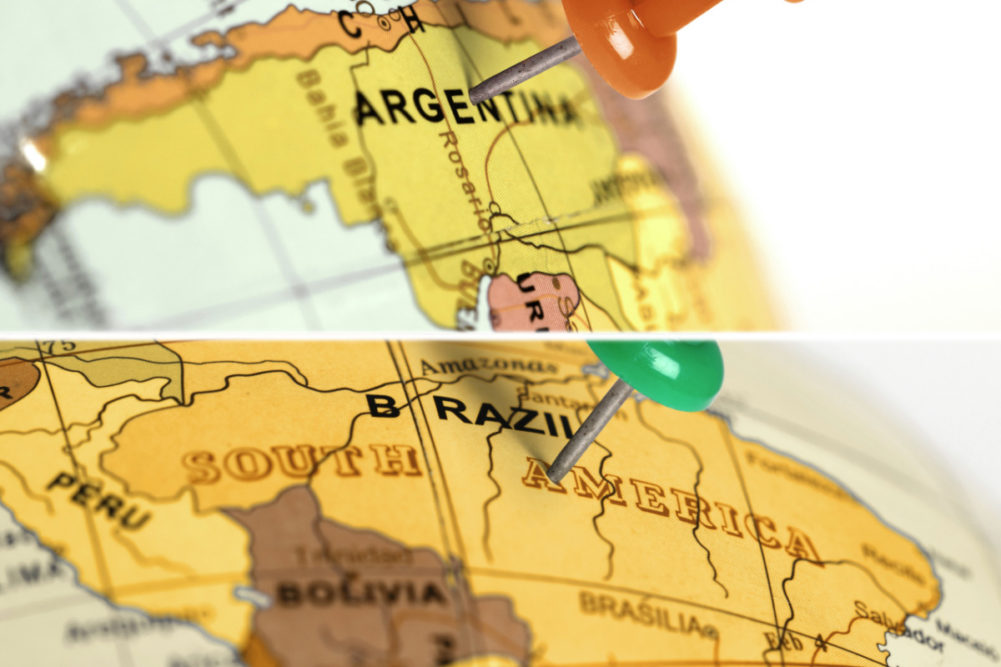Weather and politics have always played a significant role in the success or failure of the global grain industry. In 2021, extreme weather and divisive politics are not only affecting grain production but the ability to transport it as well.
Nowhere is this more apparent than in South America, which over the last 20 years has developed into the premier global supplier — along with the United States — of soybeans and corn. In Brazil and Argentina, which account for most of the continent’s grain and oilseed production, waterways are drying up as the worst drought in a century is bogging down the grain transportation system that so many importing countries rely upon. As of mid-September, the Paraná River Basin in Central Brazil was at its lowest level since 1944, forcing vessels to carry about 20% less grain than normal to avoid getting stuck. A recent study by the Rosario Grain Exchange found that low water levels on the Paraná River could generate losses of $315 million for the Argentine agribusiness sector from March 2021 to August 2021.
The situation on the Paraná River in Argentina has become so critical that 13 private terminals located on the right bank have joined together to finance emergency dredging to keep the river navigable. In Brazil, part of the Paraguay River has been closed to barges.
Meanwhile, the United States is facing its own waterway challenges, namely the long-discussed problem of aging locks and dams on the Mississippi River and other main arteries in the central US that are causing barge traffic to move less efficiently than it could if this infrastructure was modernized. In August, it appeared that Congress might finally consent to funding for grain transportation improvements when the Senate passed a $1 trillion infrastructure bill. However, the Democrat-led House of Representatives is vowing not to pass the bill unless a separate $3.5 trillion reconciliation bill (containing mostly measures that have nothing to do with infrastructure) is passed in the Senate, something that Republicans and even some moderate Democrats have vowed to reject. So once again, a political stalemate is standing in the way of desperately needed lock and dam improvements.
Here’s the reality: In the 2021-22 marketing year, the United States, Brazil and Argentina will account for approximately 70% of global corn exports and 90% of soybean exports. With supply chains all over the world slowed by the now 21-month-long COVID-19 pandemic, due in part to acute labor shortages in many countries, it’s never been more critical to ensure the swift and efficient movement of agricultural commodities from these grain-rich countries to import destinations around the world. If Brazil and Argentina’s waterways aren’t sufficiently dredged and if the US Congress continues to kick the can down the road on funding for infrastructure improvements, a world more dependent than ever on international trade will suffer.
With the number of politically and economically unstable countries growing during this troubling time in world history, those with the means to produce and export grain to food insecure populations must execute this mission with maximum efficiency. Much like arteries in the human body carry nourishment to sustain individuals, these rivers play a critical role in feeding the world. Investments must be made now to keep them functioning at an optimal level.






